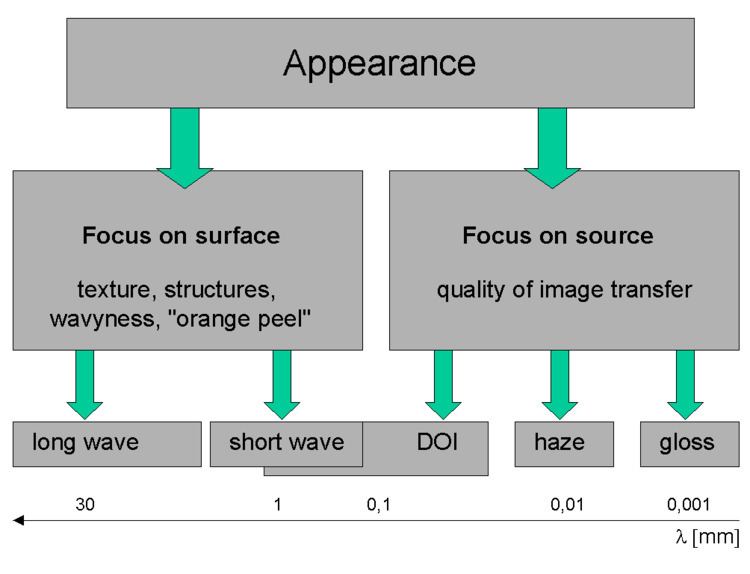 | ||
The visual appearance of objects is given by the way in which they reflect and transmit light. The color of objects is determined by the parts of the spectrum of (incident white) light that are reflected or transmitted without being absorbed. Additional appearance attributes are based on the directional distribution of reflected (BRDF) or transmitted light (BTDF) described by attributes like glossy, shiny versus dull, matte, clear, turbid, distinct, etc.
Contents
Appearance of reflective objects
The appearance of reflecting objects is determined by the way the surface reflects incident light. The reflective properties of the surface can be characterized by a closer look at the (micro)-topography of that surface.
Structures on the surface and the texture of the surface are determined by typical dimensions between some 10 mm and 0.1 mm (the detection limit of the human eye is at ~0.07 mm). Smaller structures and features of the surface cannot be directly detected by the unaided eye, but their effect becomes apparent in objects or images reflected in the surface. Structures at and below 0.1 mm reduce the distinctness of image (DOI), structures in the range of 0.01 mm induce haze and even smaller structures affect the gloss of the surface.
Terminology
Reflective objects
Transmissive objects
